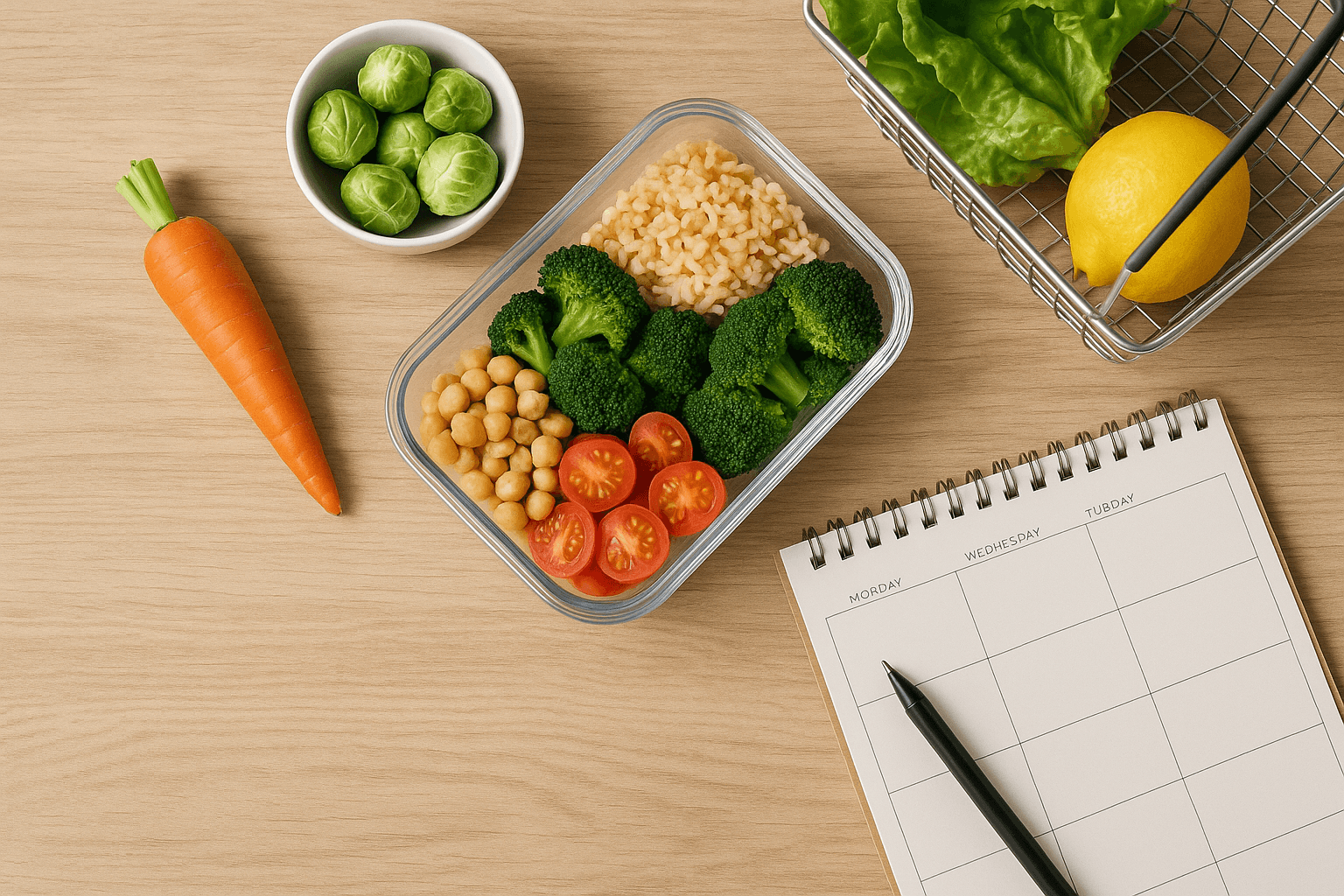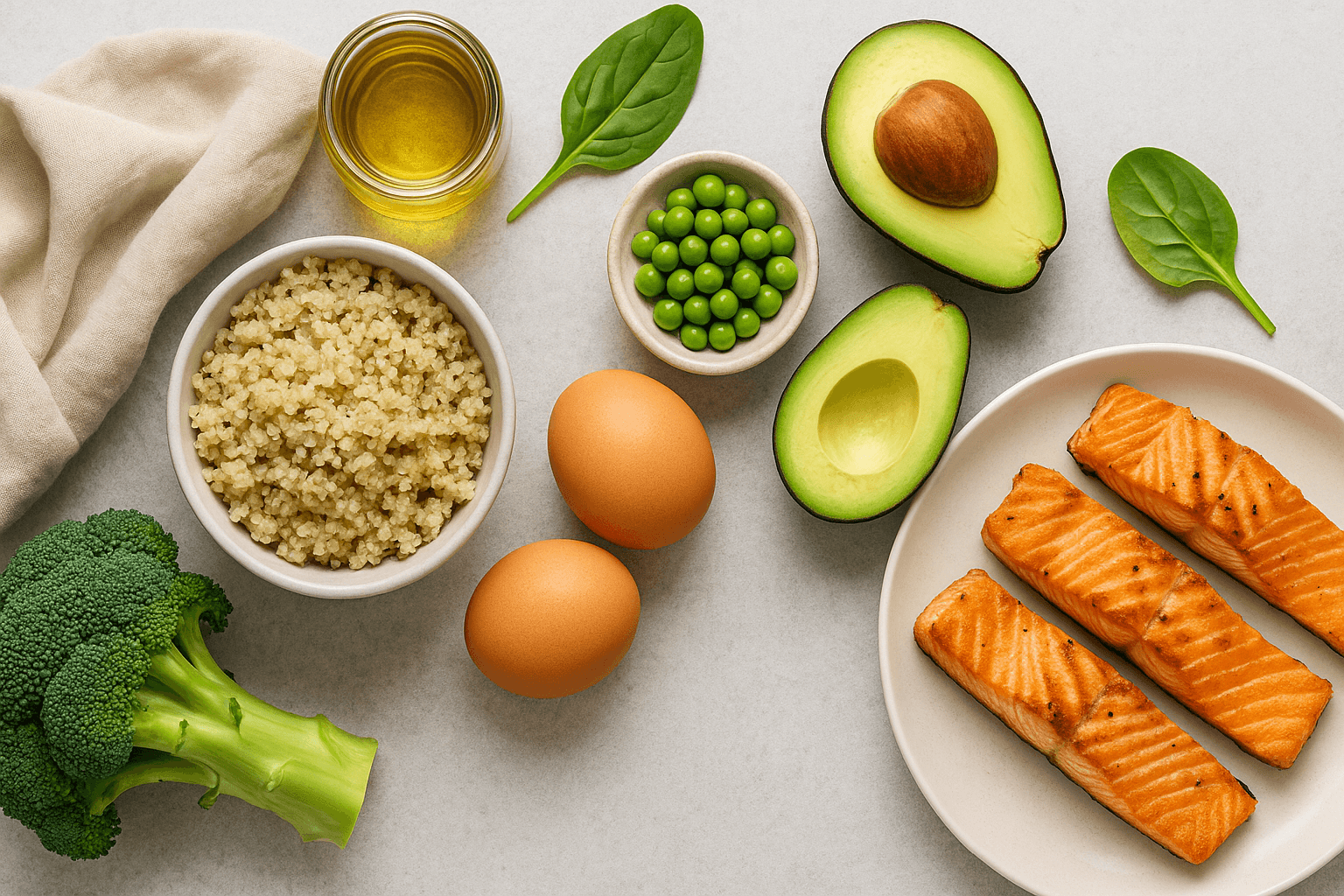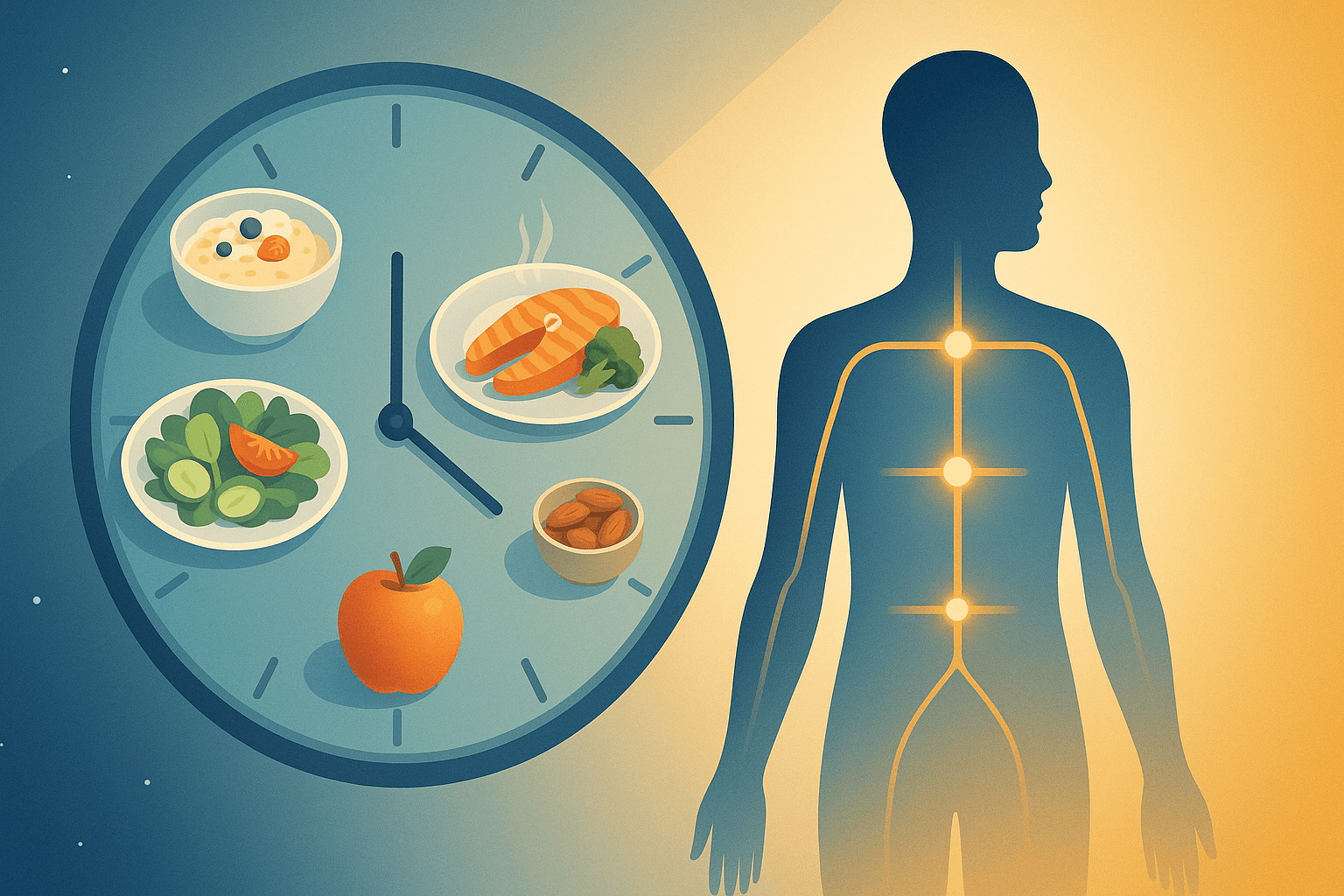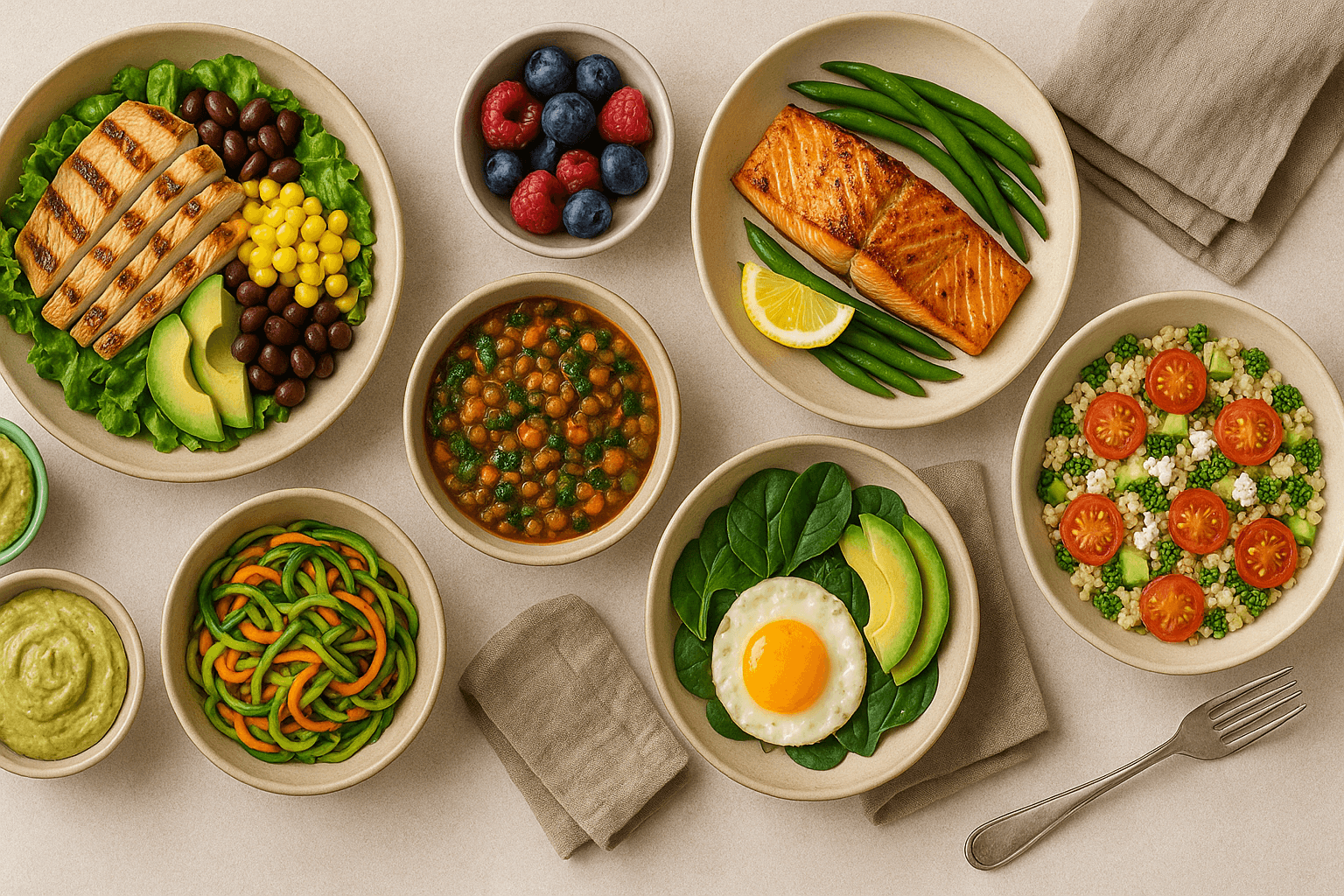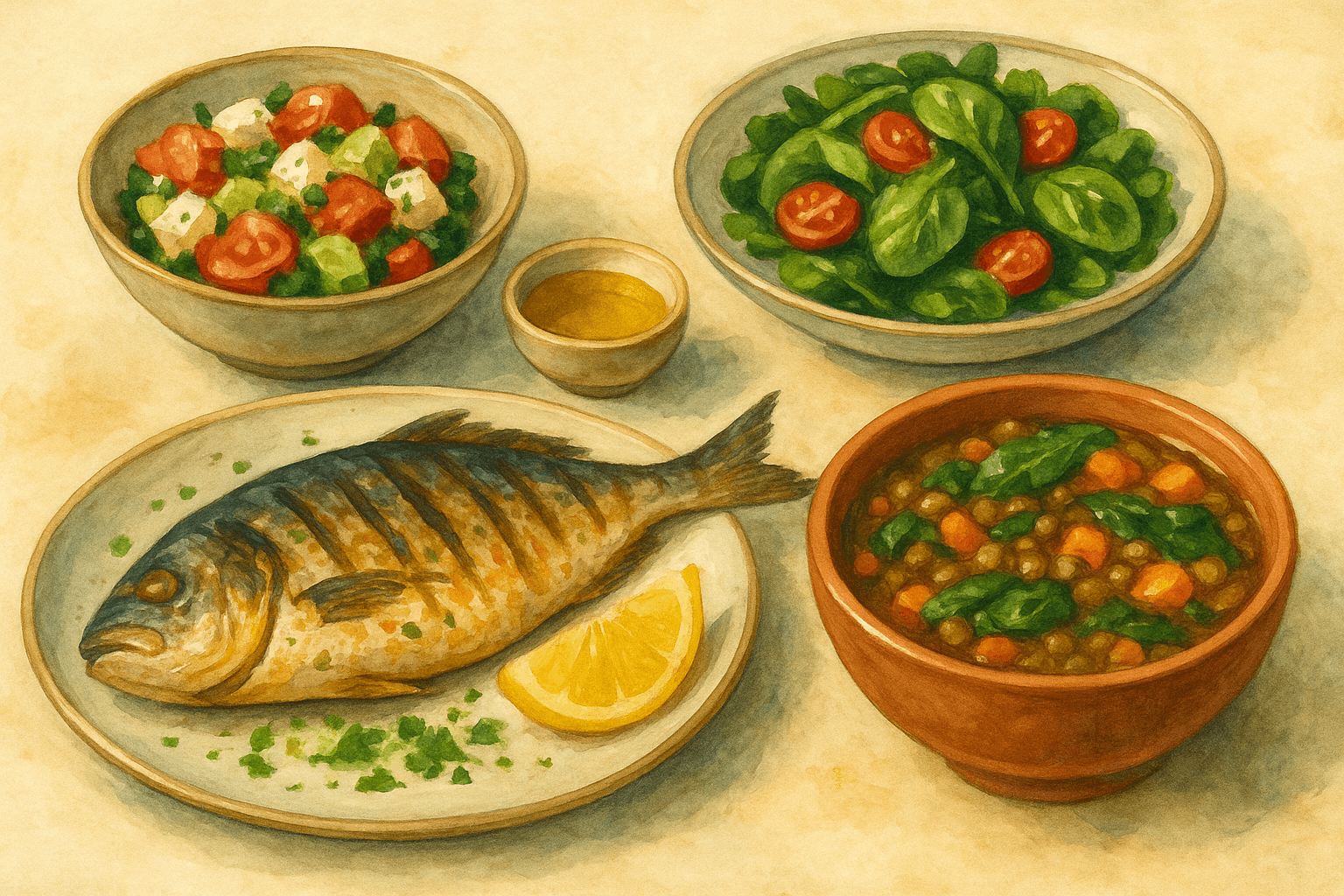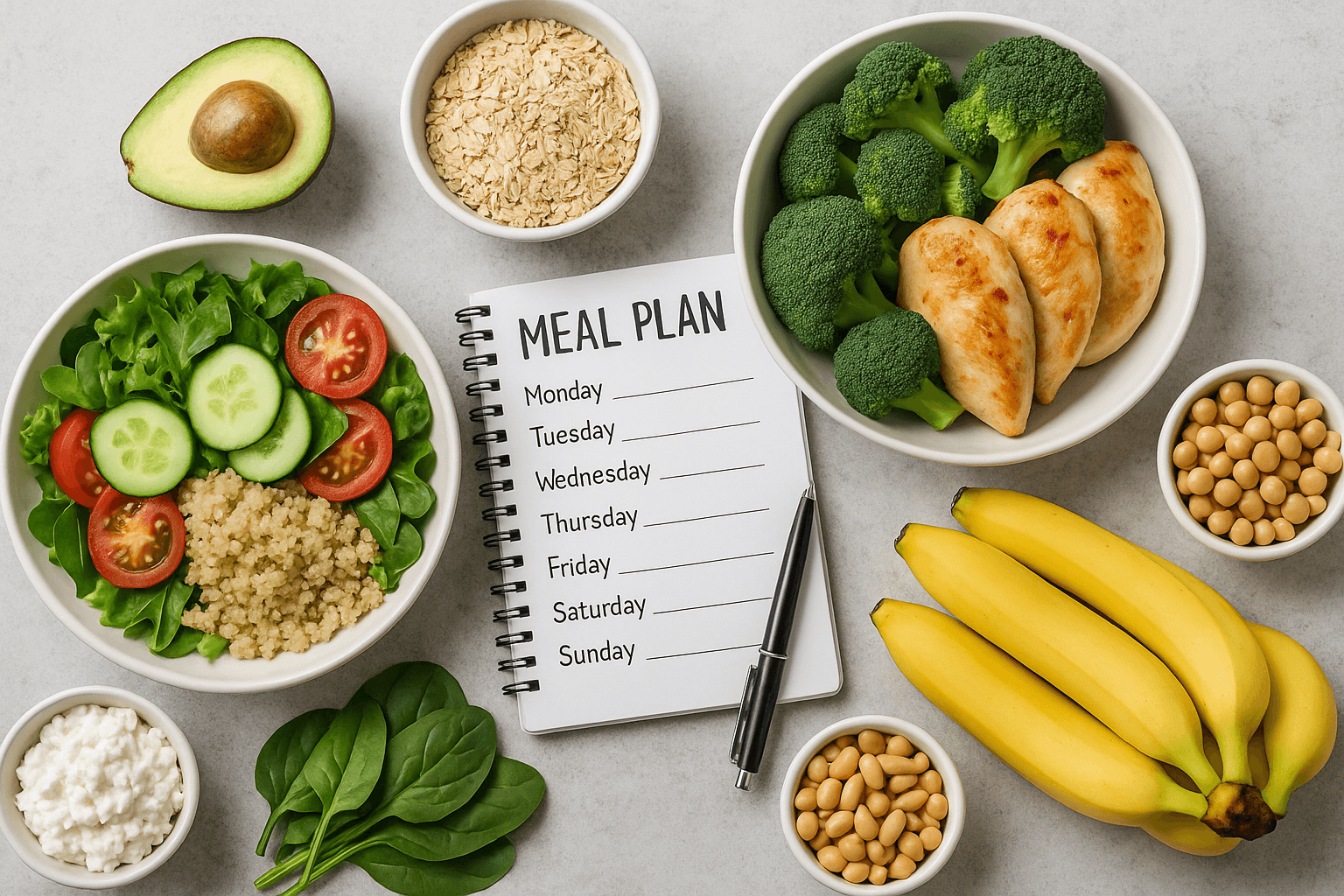THE ULTIMATE GUIDE TO MEAL PLANS: YOUR BLUEPRINT FOR HEALTHY, DELICIOUS, AND SUSTAINABLE EATING
Published on August 6, 2025
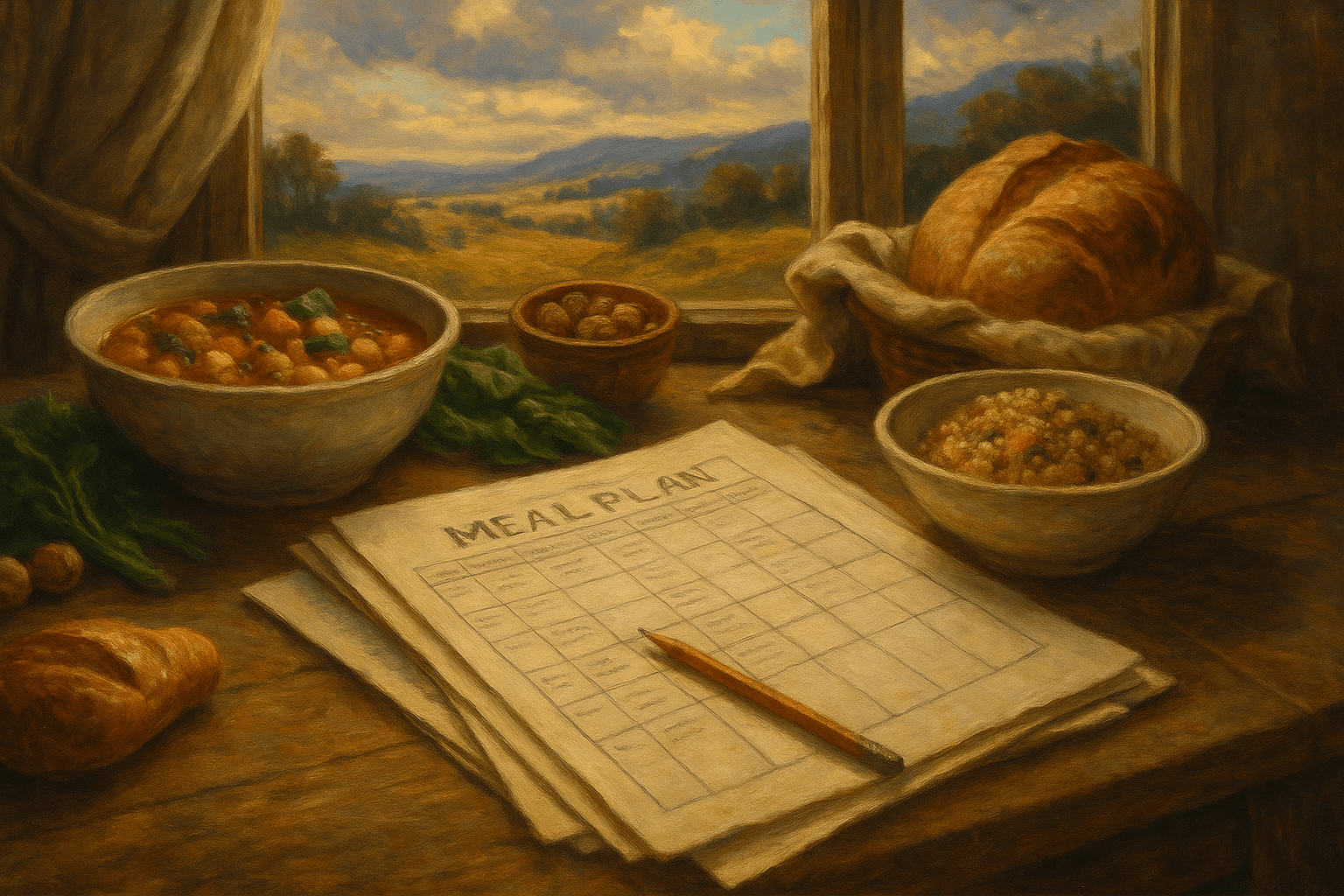
Introduction First off, let me clear up something right away: meal planning is not about sucking all the fun out of your food and reducing your week to a line-up of matching Tupperware. At its very essence, meal planning is about self-empowerment — in effect, it means taking back authority over how food works (or doesn't work) for you. That is the gap between learning what is good for us in theory and eating that way day in, day out regardless of how crazy life gets. Meal planning help while fighting relentless work emails or keeping up with those little human tornados, meal planning assistance during fatiguing workouts, or crossing fingers for a smoother daily rhythm if you are not keeled over from pain yet.
If you frame the concept of meal planning as something positive, supportive and nurturing (instead of another diet or punishment) — then you realize what a secret weapon it is: anti-restriction. Instead of frantically searching for something last minute … or giving up to fast food … or making the same 3 lame recipes, you open up an array of possibilities of diversity, color and taste. Instead of Meal Planning TRANSFORMS “I don't have time” INTO “I always have a plan.” It flips the switch from “I should eat better” to “I am eating better.” By the end of this post, I am going to explain how to meal plan to a point where you not only enjoy doing it but make it into a keystone habit that will change the way you eat and therefore transform your life for ever.
How Meal Planning Changes Lives (and Why It Absolutely Matters)
The Psychological Edge Well, here is what sucks: the number one reason pretty much everyone drops the ball with good nutrition has nothing to do with knowledge — it has almost everything to do with something called decision fatigue. We have to choose from the moment we open our eyes; what to wear, which emails to respond to, how to get there and of course — what and when and how much do we eat. At the end of the day, you have exhausted your willpower tank and your brain is desperate for instant gratification — at that point, hello takeout menu! Meal planning eliminates that stress. If you plan well, you do not have to figure it out in the moment. The best choices are already planned and prepped for you to simply enjoy, circumventing willpower at the weakest point of your day. Having that psychological safety net can be the difference between a week of stress derailing your best intentions and months of progress.
Nutrition That Actually Works A lot of times, the chasm between what we unquestionably know is healthy and what we actually consume on a daily basis feels incredibly vast. Research states that people of culture, more vegetables such as daily salads and some fruits usually; generally, more fibre (support digestion especially gut health), more protein. They eat less sugar, less ultra-processed food, and they are grabbing significantly fewer impulse buys at the store. The result? They are much more likely to keep off excess weight statistically, have better health outcomes for chronic illness and will report feeling with greater energy levels. Essentially, meal planning is not you need to eat well all the time; it stacked the odds in your favor so it far easier than making a poor choice.
Saving Time and Money Two things that are on everyone's 'to have' list: Time, and Money. The key to both lies in meal planning. There you are, diligently grocery shopping just once per week never scrambling for last-minute dinners, not letting any produce go to waste after it gets lost in the back bottom of your fridge. But this meal plan does indeed save around 30–40% off your food costs, which ain't bad in today's economy. Helping Save Food Waste, Impulse buys and Over Priced Convenience Meals from the local take out place! Plus, you gain back hours of the week by meal prepping in bulk and doing away with daily “what should we do for dinner?” stress. The return on investment? Priceless peace of mind.
How To Build A Meal Plan Scientifically
Step 1: Calculate Your Needs So before you write one goddam recipe; know your baseline, how much food does your body actually need and what type of habits did it develop. This is the basic as a first step in creating the right meal plan for you. Your daily calorie and nutrient needs will vary with your age, sex, body weight, height, activity level, and health goals (such as weight loss, muscle gain or maintenance). Most healthy adults who are looking to lose weight will require about 1,800-3,000 calories a day, though the exact number can be difficult to determine or inaccurate. For example, active and older adults need more protein (1.2–2.0g per kg body weight), but carbohydrates and fats can be sourced from a variety of foods depending on preference, cultural norms, health requirements etc. Want precision? In other words, an online calculator or even better yet a registered dietitian craft you one specific to your needs. Meal planning when you know your numbers.
Step 2: Macro and Micro Magic A well-sorted meal plan is a tribute to the gastronomic hedonists. It was not about cutting out altogether food groups but instead: lots of different proteins (chicken, fish, tofu, beans), complex carbs (quinoa, whole grain rice, barley), good fats (olive oil, almonds and avocado)…and more importantly; colorful vegetables and fruits. Switching up your ingredients not only keeps things exciting, it also ensures you get a wide spectrum of nutrients such as vitamins, minerals, antioxidants and phytonutrients. Healthy Eating 2Meal Plans 1Typically, this simply means that plant-based eaters need to be mindful of certain key nutrients such as vitamin B12, iron, calcium and omega-3s which can all easily be met with minimal planning and some variety. This isn't about perfect, it's about a strong, vibrant base that can feed you through every season.
Step 3: Structure Brings Freedom The Rigid Nature of Meal Planning: Many people are scared away from meal planning because it feels too strict, but the opposite is true–structure breeds freedom. With a structure to your week — perhaps Meatless Mondays and Taco Tuesdays, or just the same core five meals on repeat — you're actually cutting down on decision fatigue. Within that plan, you can still freestyle a bit or swap out items as needed, or even flex when something more social and unplanned pops up without losing your nutritional beat. Having a pot of grains cooked, a tray of vegetables roasted or proteins prepared in advance means that whenever I feel as though daylight and energy is slipping away from me, dinner will be fifteen minutes away effort not put to waste. And that, my friend, in the real freedom of being able to eat good food when life wants to serve you a shit sandwich.
The 12 Types of Meal Planners That Suits Every Personality
The Classic Weekly Plan It's the holy grail of meal preppers and busy families. Pick your breakfasts, lunches, and dinners for the week, list every single ingredient you will need to make those meals (including salt!), and then release yourself to the next 7 days. Routine, Scheduled Tasks (e.g. shopping for—prepping and cooking batches of similar meals). The key here is also ingredient cross over so you buy less for your weekly plan. Add spinach to a breakfast omelet, lunch salad, or dinner stir fry. Pick up a rotisserie chicken, and you have the makings for sandwiches, wraps, salads or even soup in a snap. Plus this way helps reduce waste, saves money and organizes your week more than anything else.
Batch Cooking & Prep Day Hate cooking every single night of the week, batch prep for life. Schedule a few hours, say Sunday afternoon or two nights a week, to make the building blocks of healthful meals. Packaged up a round of chicken, 12 boiled eggs, baked sweet potatoes and roaster broccoli on a sheet pan with quinoa on the stove. Place everything in containers and store in the fridge. Combine with sauces, wraps, salads or even in omelettes at mealtimes. It's perfect for people who enjoy a little flexibility (and variety - let's face it, oatmeal is delicious but exciting everyday) Batch-cooking gives you the variety, at little to no cost of effort or mess nightly.
Cook Once, Eat All Week Enter — what I believe — is one of the new biggest revelations in meal planning: Cook Once, Eat All Week. Rather than meal prepping, you prep components — proteins, veggies and grains — to be combined any which way. Maybe roast chicken on Sunday turns into chicken tacos on Monday, a chicken salad for Tuesday, and a stir-fry come Wednesday. Simply swap sauces, spices, and sides for new flavors all week long; hardly lifting a finger!
One-Day Meal Planning You could be a beginner, or you need to plan when possible based on your available schedule. Your best friend is one-day meal planning. Forget the seven days and plan for tomorrow instead. Make overnight oats for breakfast, pre-cut veggies to toss in a salad during lunch, prep marinated chicken ready to cook at night. Just this barebones architecture almost eliminates your food stresses and keeps you on course with your nutrition. The practice will become a habit; and soon you will be able to plan your next 2 days, then maybe 3, or even go for the first time one full week ahead.
Special Goals Themed Meal Plans
Weight Loss and Body Composition It is your very best ally when it comes to weight loss or body composition changes. Fibre-rich, protein-rich meals rated as most filling — There is substantial evidence to indicate that high-protein, high-fibre meals provide increased perceived satiety, reduced food cravings and decreased snacking between meals. Planning in advance will prevent you from getting "accidental" extra calories via mindless nibbling or last-minute takeout. Not only calorie control, but in general eating meals that are colourful (and therefore nutritious), contain healthy fats and include herby/ spicy/citrussy flavour will easily please your tummy. Finally, make sure you allow for incentives and cheat meals — lasting results require a little of that yin/yang, good/bad.
Sample 1-Day Plan: Scrambled eggs with steamed spinach and tomatoes on seed bread Carrot sticks and hummus Lentil salad with roasted veges Greek yogurt and berries Grilled salmon, quinoa and steamed broccoli
Muscle Gain and Athletic Performance Whether you are an athlete, a body builder or just someone who works out on weekends, everyone needs more fuel. If you are training for muscle gain, your meal plan should include plenty of protein (20-30g per meal) from wholefood sources, complex carbs to fuel your day and healthy fats to keep your hormones in check and support recovery. Meal plans and snacks are the key to consume enough calories and nutrients — even on busy days. Batch-cook lean proteins, prep grain bowls, and stock up on hard-boiled eggs, trail mix + Greek yogurt to quickly refuel before + after your workouts.
Plant-Based Meal Plans There's a reason that plant-based eating is all the rage. It is chock full of fiber, antioxidants, and healthy fats (which all help reduce the risk for life threatening diseases) — but only when planned correctly. It can be done, it just takes a little bit more effort to plan your meals so that you are consuming enough protein, Vitamin B12, iron, calcium and omega-3. The key? Variety! Diversify with beans, lentils, tofu, tempeh, whole grains, nuts, and seeds. Flavored with herbs, spices from all over the world and heavy on nutrient-dense sauces. Make sure you plan on getting at least 1 source of vitamin B12 (fortified foods or supplements), and feature dark leafy greens, seeds and legumes for iron and calcium.
DIETARY ACCOMMODATIONS
Gluten-Free, Dairy-Free, Keto, Intermittent Fasting Complex dietary constraints can make eating quite challenging — unless we start to use a meal plan, turning it into an opportunity to be both creative as well as with peace of mind. For those who need to avoid gluten use brown rice, quinoa, sweet potatoes and gluten free oats as the basis of their meals instead. Dairy-free? For added calcium and protein, reach for plant milks and seeds or even use tahini. Keto meal planning which includes high in fat, moderate protein and low carb foods like Avocados, Nuts(Almonds), egg-based dishes and Non-starchy vegetables. Because intermittent fasting plans make sure you're only eating nutrient dense, satisfying foods during your feeding window — which keeps you from binging or undereating.
Long-Form Real-World Meal Plans
Balanced MacrosWeight Loss7-Day Meal Plan (1800 kcal/day)
Day 1: Greek yogurt, walnuts, blueberries Bell pepper strips, hummus Chicken & veggie salad Apple, almond butter Grilled chicken, brown rice and quinoa, roasted broccoli
Day 2: Scrambled Eggs with Spinach and Tomatoes, Whole Grain Toast Cottage cheese, pineapple Quinoa, chickpeas, roasted carrots Handful of almonds Shrimp stir-fry, riced cauliflower and mixed veggies
Day 3: Overnight oats seed and strawberry Baby carrots, tzatziki Tuna salad, crackers, apple Low-fat cheese stick Salmon, baked sweet potato and green beans
Day 4: Smoothie (protein powder, banana, spinach, almond milk) Rice cakes, peanut butter Chicken, wild rice, fresh steamed broccoli Greek yogurt Spaghetti squash topped with ground turkey and chili, steamed corn in fajita sauce
Day 5: Cinnamon apple walnut oatmeal Sliced cucumber, hummus Lentil soup with whole-wheat bread Mixed berries Stir fry tofu, whole grains of your choice, snap peas
Day 6: Poached eggs, sautéed kale, roasted tomatoes Cottage cheese, berries Black bean wrap with mixed salad Almonds, dried apricots Grilled filet mignon, baked potato, asparagus
Day 7: Yogurt parfait, granola, mango Carrot sticks, hummus Chickpea salad, quinoa, tomatoes Orange Broiled cod, wild rice, green beans
30/8 17-Day Cycle Plan (for Families on the Go)
Rotational planning, as used by a busy multi-child-family, is not just efficient: it prevents madness. By the way, here you also don't have to reinvent the wheel every week and create one meal plan four times in a row. You are guaranteeing a mix of everything, hitting all the food groups and preventing "menu burnout". Come up with a variety of things for dinner, types of protein or cuisine you like and the way its cooked (like sheet pan, soup & stir fry, casserole, grill) Batch-prep breakfast staples (like overnight oats, baked egg cups, and smoothie packs), rotate a few lunches to eat throughout the week, and have healthy snacks within reach for easy grabbing.
Sample Dinners by Week: Week 1: Sheet pan chicken & veggies Turkey tacos Vegetarian chili Grilled fish & salad Homemade pizza Leftovers — eat out
Week 2: Slow cooker beef stew Takeout Thai Pumpkin Curry Slow cooker curries Sweet potato chili French onion soup On your own
Week 3: Veggie frittata (breakfast for dinner!) Mexican stir fry Zoodle pasta Vietnamese pho Baked honey glazed ham Leftover smorgasboard
Baked salmon, stir fry tofu, beef stew, pasta primavera, burrito bowl, frittata, leftovers
Week 4: Beef & broccoli stir-fry, Chickpea Salad, Turkey Burgers, chicken thighs Mediterranean Pasta, Vegetable Lasagna, leftovers
Tips For Sticking to Meal Planning
Start Small You do not need to plan each meal every week for the rest of your life. You could start by committing to one meal a day (say, dinner), or three days a week. Expand to lunches, followed by breakfasts and snacks as you sink your teeth into the rewards. Building sustainable meal planning, one step at a time.
Repeat What Works If you find a meal that is a successful repeat it. On average, people cycle through 10–15 favorite recipes. You deliberately eat them on repeat so that you have a shorter shopping and prep list, decrease food waste, and take the guesswork out of meal planning.
Get the Whole Household Involved Have kids choose a meal or invite your significant other to experiment with new recipes, and keep an ongoing “wish list” for future meals. Mealtime gets to turn into a team sport—Instead of being a one man/woman show.
Make Two of Everything That leftover soup, makes tomorrow's lunch or that tray of roasted veggies can go wraps, grain bowls, omelets. They freeze really well and have been my saviour when I am too busy or tired to make myself a healthier meal.
Prep Snacks and Backups Slice raw vegetables, portion nuts, bake whole grain muffins and make yoghurt parfaits the night before. When you have a healthier option all ready to go, the less time you spend thinking about that vending machine, drive thru or easy banh mi.
Embrace Imperfection Real life will intervene. It takes weeks for you to go off-course and some meals are going to be absolute failures, and sometimes takeout is the best solution. That’s not failure—it’s flexibility. Meal prep is also about resiliency — in being able to come back and try again after you assume a loss.
Better Cook, More Organized — Meal Planning in the Real World
Travel and Eating Out For travel/power outage/parties, simply plan for delicious, simple “buffer meals” to rebalance your body after any major deviation. Pack shelf-stable snacks like nuts, dried fruit and protein bars for trips. Order the protein, vegetables, and whole grains at restaurants and do not be shy if you have to make a couple of substitutions.
Meal Planning on a Budget Plan meals around store sales, in-season produce and low-cost staples such as beans, lentils, rice, and oats. Purchase in bulk whenever possible, and use every bit of the food you buy — make soups from veggie scraps, redefine leftovers, and decrease waste by making all of your “clean out the fridge” meals at the end of a week.
Unique Circumstances: Children, Athletes, Healthcare Conditions Let meals vibrant and children build-your-own-cups, tacos or bowls. Nutrient timing (Carbs pre & post training), higher calorie plans for athletes. Pre-pack snacks and easier to make meals, especially for people with medical conditions like diabetes or allergies (see recipes), to prevent nighttime emergencies. Follow-up with a registered dietitian if necessary for individualized advice.
Meal Planning Myths—Busted
Myth: Meal planning is boring. The Reality: Reset with Themed Nights, New Recipes and Seasonal Swaps. Being liberated from the stress of food everyday is anything but boring!
Myth: You have to cook every single day. Truth: If you utilise batch cooking, freezer meals and leftovers, you can still be cooking only two nights a week but have fresh home cooked food every day.
Myth: It is for only fitness people. Fact: Meal planning is for everyone—busy parents, students on a budget, professionals, retirees, and anyone wanting a little extra peace of mind at dinner time. All you have to do is feel good and be done with it.
Myth: It takes too much time. Truth: Yes it requires some capital up front but life pays you back in spades. The plan means you shop in larger amounts less often, stop gawking into the fridge quite as much and start having more relaxing evenings. People have reported saving up to several hours each week after a few months of using meal planning.
Resources and Further Reading
Apps: Eatr, Mealime, Paprika, MyFitnessPal. Books: "Keto Vegan" by James C. Graham, "How Not to Die Cookbook" by Michael Greger, "Cook Once Eat All Week" by Cassy Joy Garcia, "The Ultimate Bodybuilding Cookbook" by Kendall Lou Schmidt



